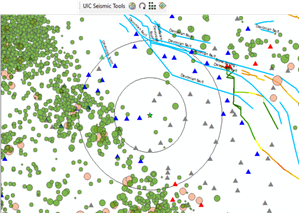Texas Railroad Commission turns to artificial intelligence to improve seismicity review process
AUSTIN – The Railroad Commission has turned to artificial intelligence to optimize the time the agency’s technical analysts spend on seismicity reviews to ensure residents and the environment are protected.
Seismicity reviews are conducted by the Underground Injection Control (UIC) Department for injection/disposal well permits in areas susceptible to earthquakes and in certain geologic zones. UIC staff programed a machine learning algorithm to help with the large amount of information that needs to be processed and digested.

Along with some other changes, tasks performed by the machine learning algorithm have enabled UIC to wipe out a backlog of seismic reviews to zero today.
Like the technical analyst, the AI program weighs many factors related to the number, severity and proximity of earthquakes and uses a decision tree to assign a grade to the review. The higher the grade, the more the permit would be allowed to inject.
If AI grades the seismic review with low grades, the technical analyst will consult with the agency’s seismologist on whether the permit request should be denied or be allowed a minimal amount of disposal (10,000 gallons per day). The AI process, which has a high accuracy rate, assists the technical analyst, who reviews the data and ultimately makes the final judgment.
“Over time, since we are accruing more data every day, we will be able to produce more accurate models by feeding the machine learning algorithm more data,” said Sean Avitt, Manager of the UIC Department. “It’s not a replacement for our technical analysts. It’s a tool that not only allows them to do their jobs more quickly, but it helps them make the best possible decision on each seismic review.”
By embracing technology, including the automation of certain tasks, the time it takes for injection/disposal well permits went from more than 100 days in November 2018 to about 20 days presently. More importantly, AI also ensures consistency in permitting decisions and how seismic and other factors are considered.
For more information on seismicity reviews, click here.


